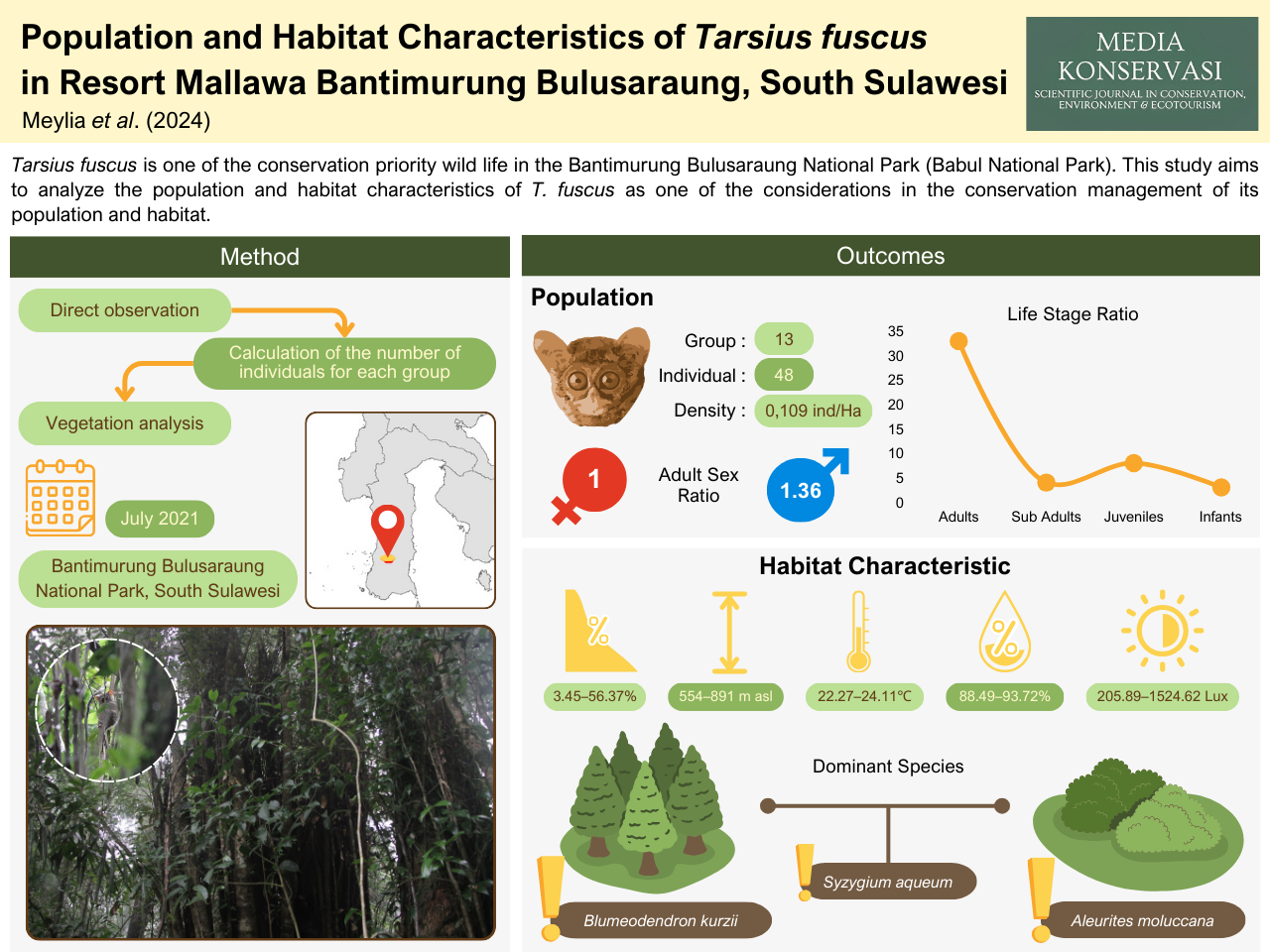Population and Habitat Characteristics of Tarsius fuscus in Resort Mallawa Bantimurung Bulusaraung, South Sulawesi
Abstract
Tarsius fuscus is one of the conservation priority wildlife in the Bantimurung Bulusaraung National Park (Babul National Park). This study aims to analyze the population and habitat characteristics of T. fuscus as one of the considerations in the conservation management of its population and habitat. This research was carried out in July 2021 in the forest around Bentenge Village and Samaenre Village, Resort Mallawa, Babul National Park. The method used was direct observation, calculation of the number of individuals for each group, and vegetation analysis at the meeting points of T. fuscus. Based on observations, the population size of 48 individuals from 13 groups was obtained with an overall population density of 0.109 individuals/Ha. The population density in the secondary dryland forest is higher than in the scrubland. The number of juvenile and infant in both land cover were low compared to the adults. T. fuscus was found in two types of habitat, there are secondary dryland forests (SDF) and scrubland with specific ranges of physical parameters. Based on vegetation analysis, SDF was dominated by the mana-mana tree (Blumeodendron kurzii) with an important value index (IVI) of 57.72%, while shrubland was dominated by kemiri tree (Aleurites moluccana) with an IVI of 40.75%. The two land covers are dominated by the Moraceae family and jambu air seedlings (Syzygium aqueum).
Authors

This work is licensed under a Creative Commons Attribution 4.0 International License.

Media Konservasi is an open access journal, meaning that all content is freely available without charge to the user or their institution. Users are allowed to read, download, copy, distribute, print, search, or link to the full texts of the articles in this journal without needing to request prior permission from the publisher or the author.
All articles published by Media Konservasi are licensed under the Creative Commons Attribution 4.0 International License. This allows for unrestricted use, distribution, and reproduction in any medium, provided proper credit is given to the original authors.
Authors submitting manuscripts should understand and agree that the copyright of published manuscripts is retained by the authors. Copyright encompasses the exclusive rights of authors to reproduce, distribute, and sell any part of the journal articles in all forms and media. Reproduction of any part of this journal, its storage in databases, and its transmission by any form or media is allowed without written permission from Media Konservasi.





